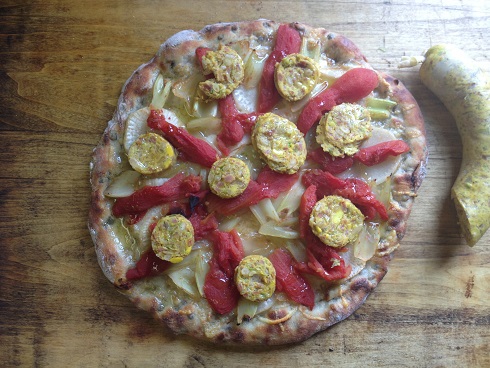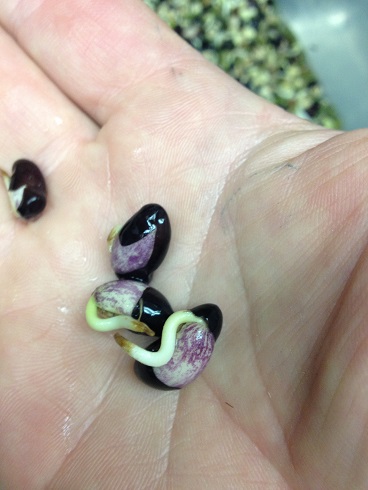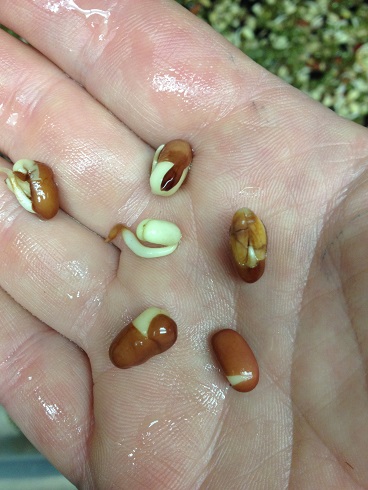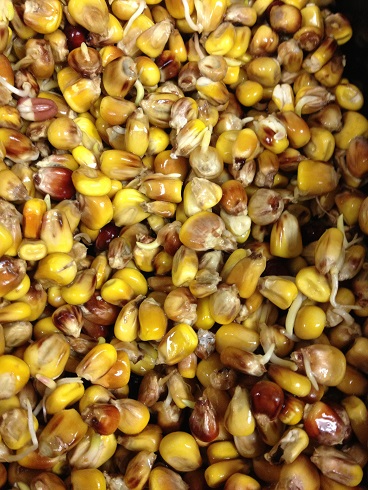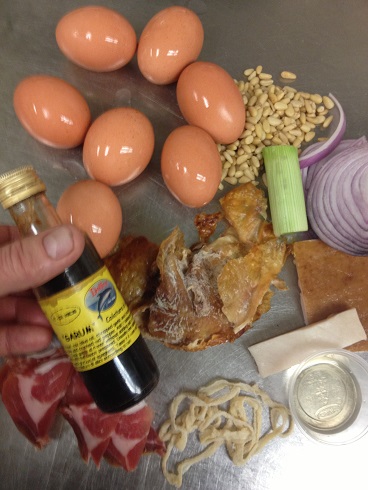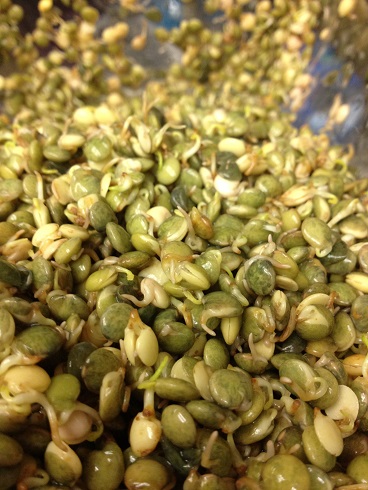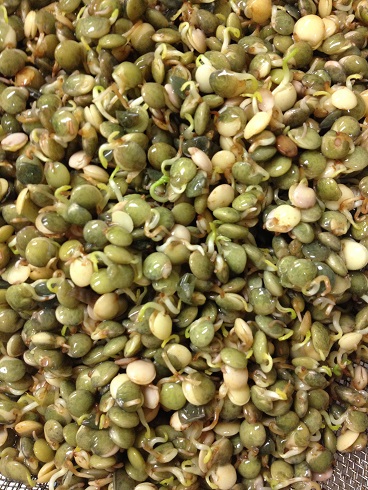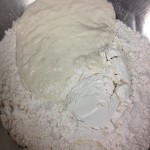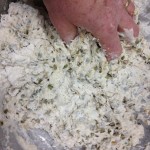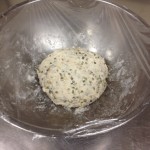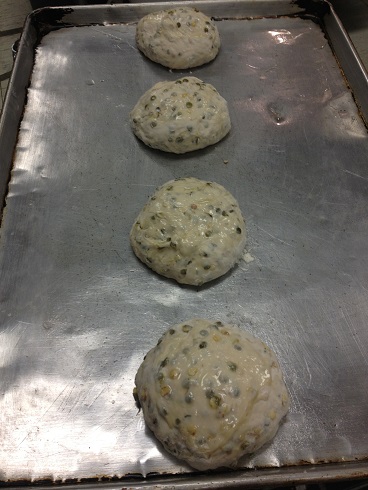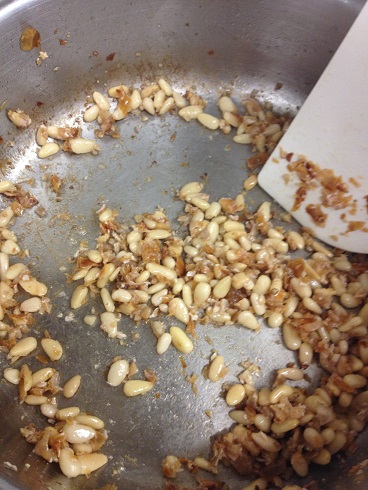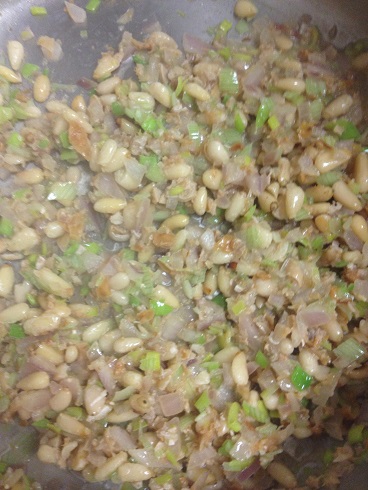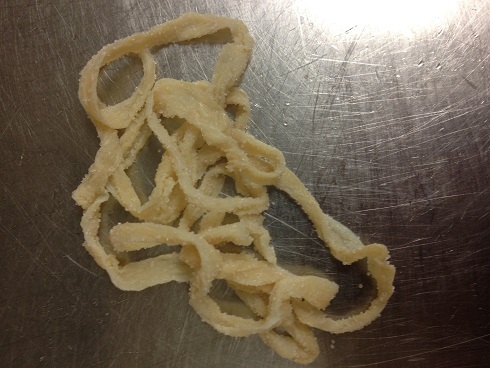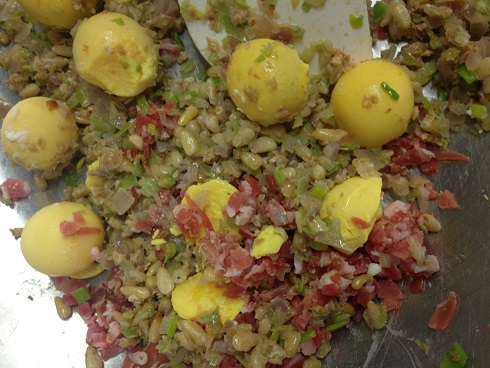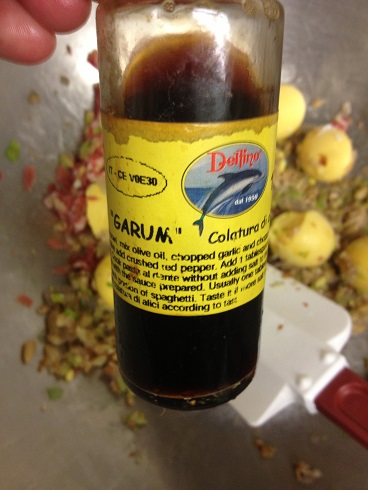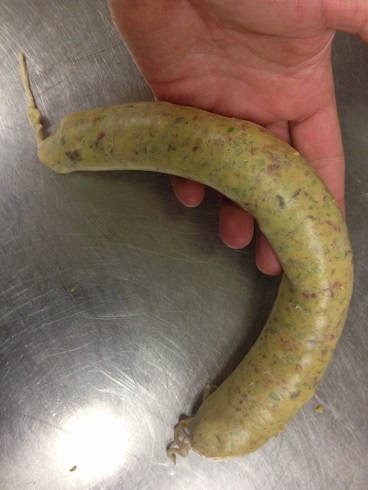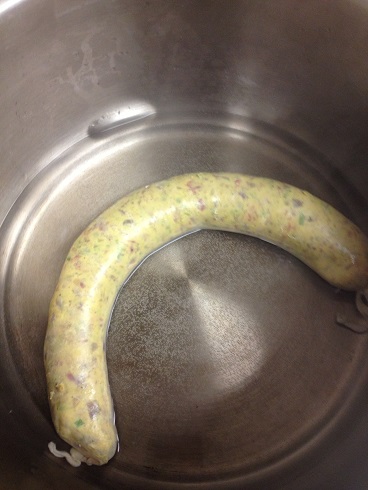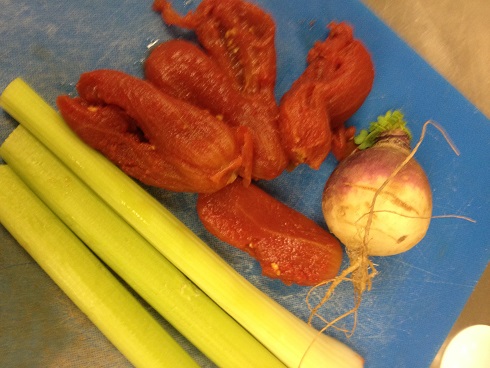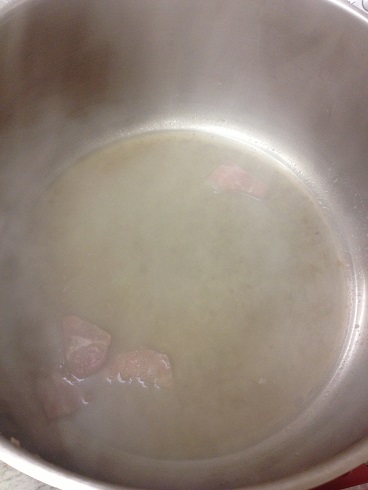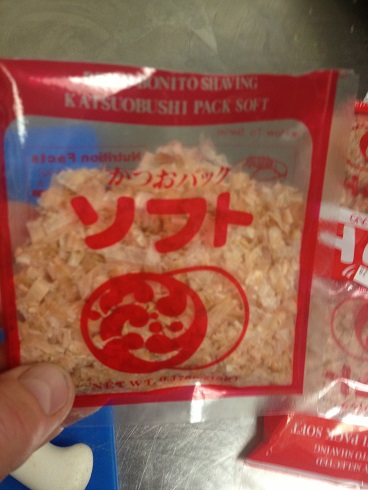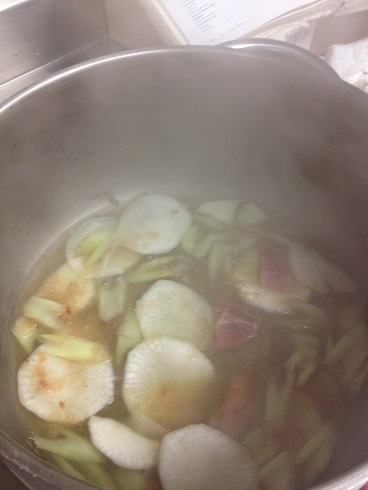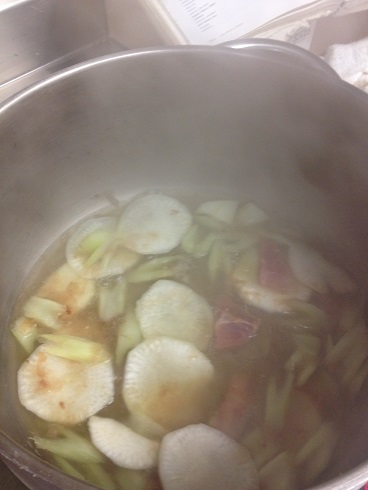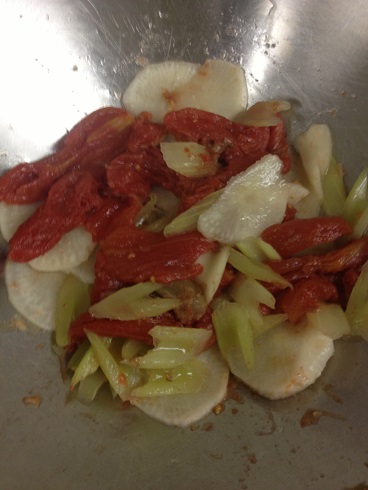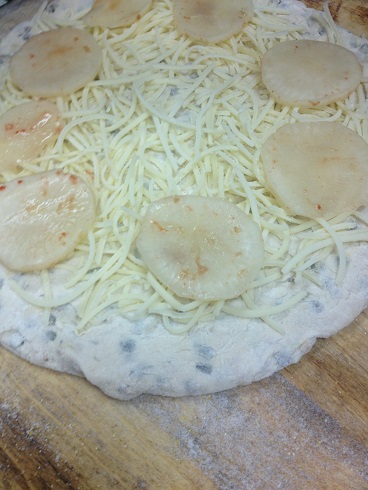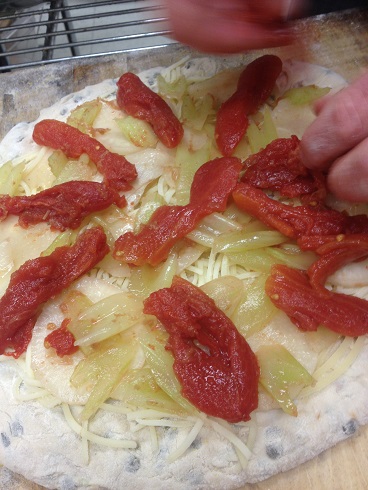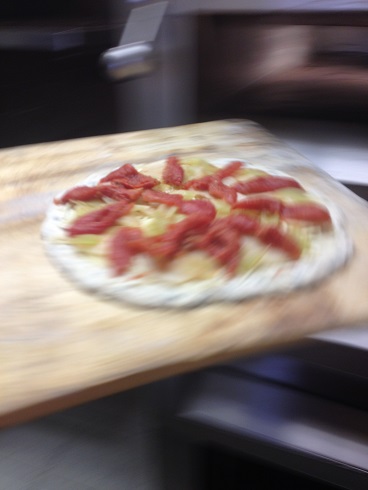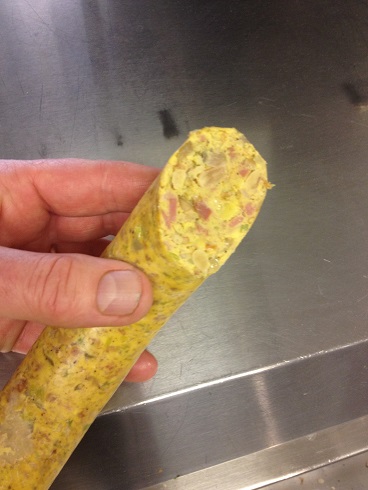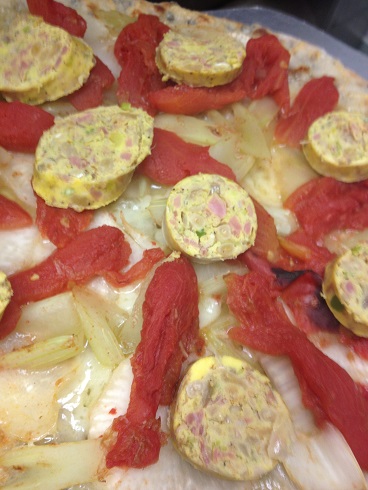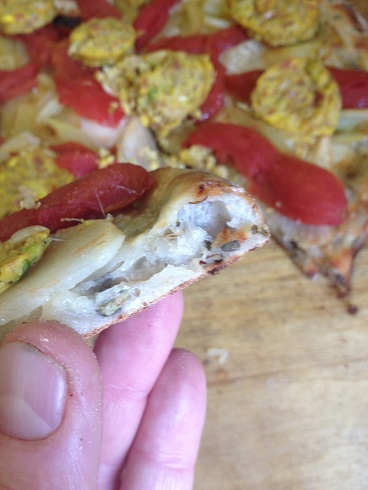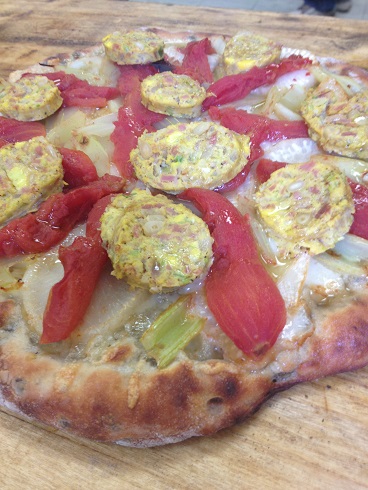
Kimchi, the traditional condiment of Korea combined with cheese on a pizza or (as above), on a Turkish Pide? Yes, yes, yes I say. The textural crunch and aggressive flavor of kimchi is a perfect match for combinations of cheeses such as aged provolone and mozzarella, gruyere or even cheddar curd. Combining kimchi with textural foils like nuts and crusts is heaven especially with fatty meats such as bacon, guanciale and even Prosciutto di Parma, (Yes, that may be construed as sacrilegious in pizza Puritan circles but it sure is a killer taste!) I like kimchi with sweet fruits such as orange, blackberry and even pear. In fact in my high-volume pizzeria, I’ve made kimchi a distinctive part of my menu-mix with two pizzas that sell well: The Crouching Kimchi, Hidden Chicken has Mandarin orange, Teriyaki, Local King Family Chicken and Cashew and the Chicken Yakitori has an Asiago-Bechemel as well as Onion, Teriyaki, Chicken and Mandarins.
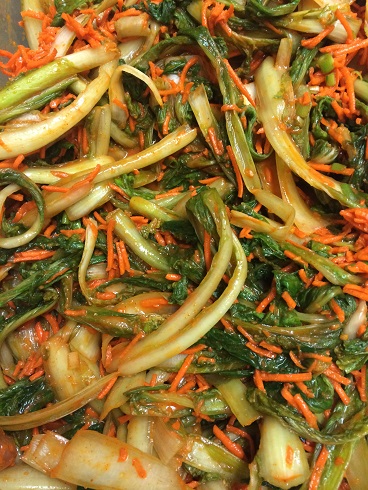
Lets start with what gives Kimchi all the attention these days. The turn-on for most people like me is the fermented zing you get when crunching on a nice piece of kimchied cabbage or root like daikon. The turn-off is this same spicy zing for folks who are not used to it…simple as that!

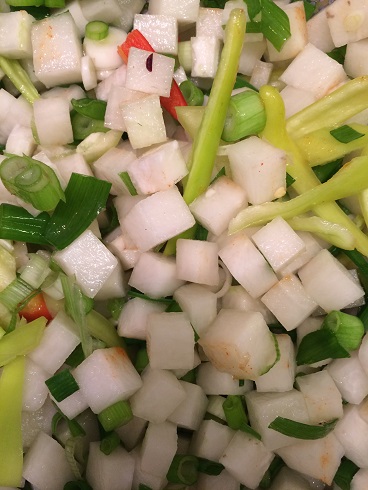

Here I took a boatload of Amish Daikon from Chesterhill, Ohio and cubed it to make Kkdugi, (daikon kimchi…daaaa). I just salted the little cubes for twenty minutes then squeezed the salt out and dried them as best I could then I added Korean pepper paste, raw garlic and Thai fish sauce with a few anchovies for a rough and tumble marinade. After adding some fresh hot peppers, scallion and cilantro, I let the soaking daikon sit at room temperature until my wife said, “Get that crap outta here.” So I finished up with the jar outside. After twenty-four hours to kick start the fermentation at higher temperature, I set in my refrigerator.
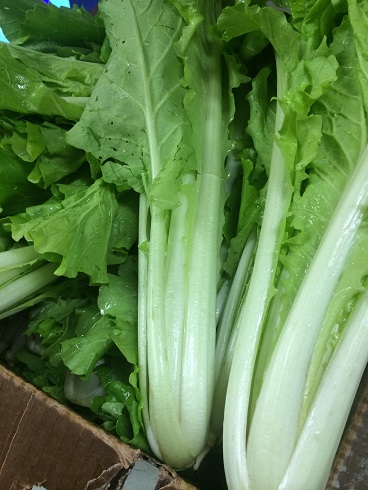
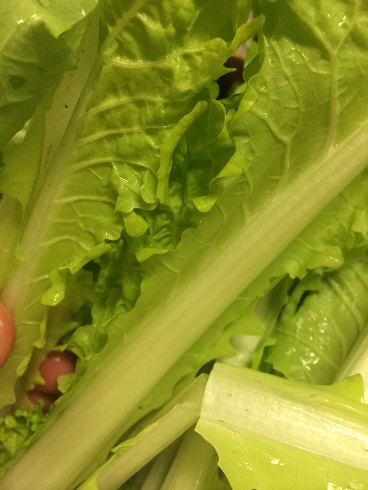
Last week I was glad I had the Kkdugi because I added it to some great Asian long stemmed Taiwan Bok Choy and also known as Wa Wa Tsai that I obtained from Deep Roots Farm.
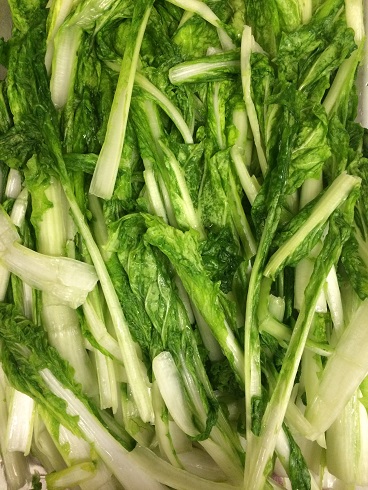
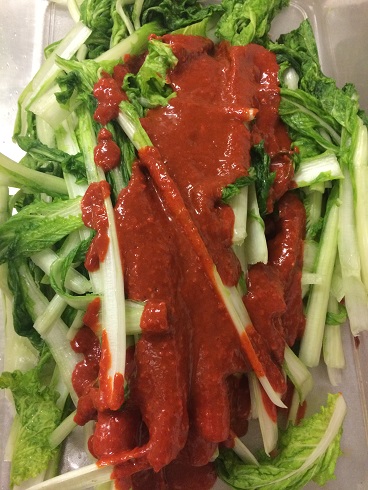
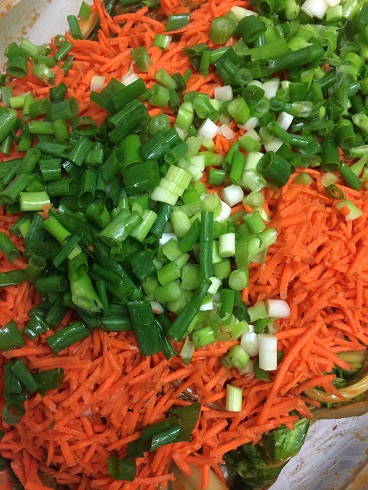
The preparation for this beautiful kimchi was fairly simple: I made a kimchi sauce with Thai fish sauce added to Korean pepper paste with Sicilian anchovy and a few dashes of Sicilian Garum, (fish sauce). Then I threw in a handful of raw garlic, juice from three lemons and grated ginger. Then I salted the cabbage and tossed for thirty minutes until it became just limp then rinsed, squeezed and transferred to another container. I then added some shredded carrot, scallion and the Kkdugi for a final mix.
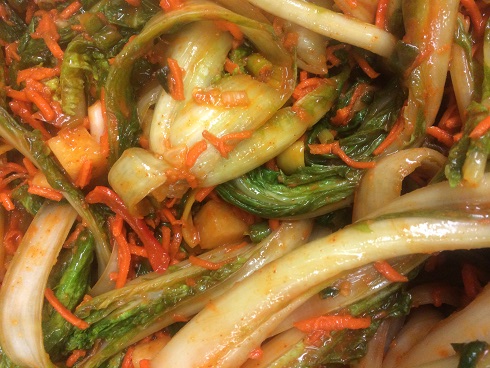
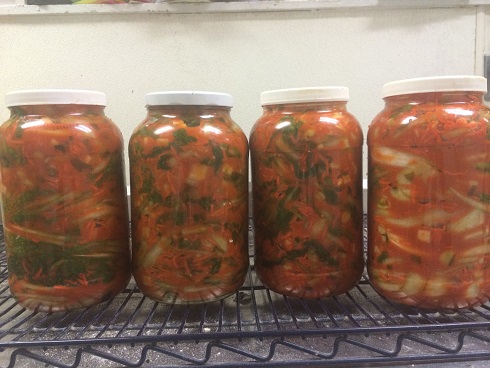
Then it was to the jars for the final ferment-set and a cool trip to the fridge for a few months.
Here is how I made the Turkish Pide at the top of this page:
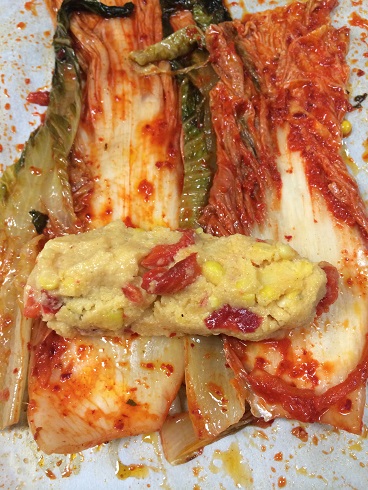
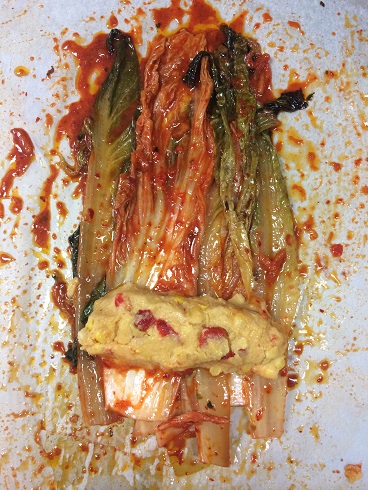
First, I cooked some polenta then mixed Parmesan and roasted sweet Toro peppers from Cowdery Farms into it. I let it cool and then rolled it up. I salted some romaine lettuce, let it wilt then rinsed and squeezed the juice out.

I then combined some napa cabbage kimchi I had with the romaine and formed a roulade with the polenta and for a spicy-sweet finale, added some pickled Cowdery Cherry-bomb peppers to the top of each roulade! This made a fine packet ready for cooking!
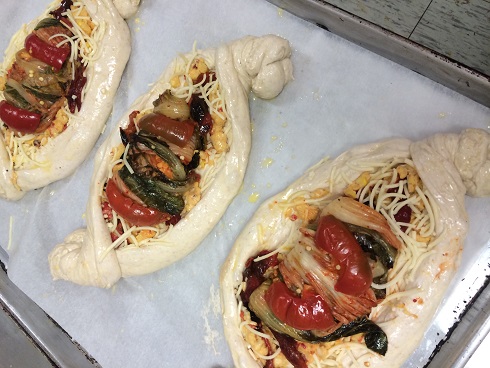

When the time was right for baking, I used an 83 percent hydrated, high protein dough that aged for 30 hours in cold holding and formed a Turkish style pide. I placed some aged mozzarella and some Gruyere on the Pide with the extra polenta and more sweet-roasted peppers.

I hope you can try using kimchi on pizza.

It’ll give you another dimension of taste to your menu…after all who doesn’t want more spice in their life?

